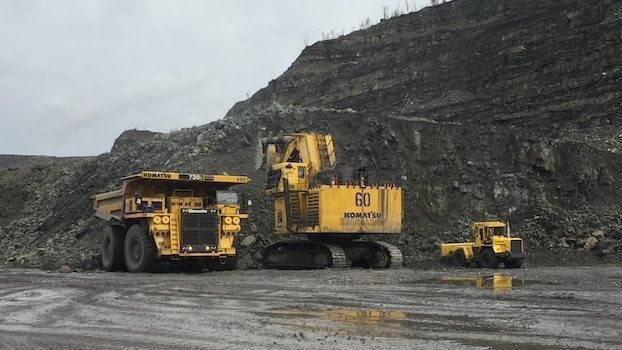What’s the next step in Buckingham’s mining fight?
Published 7:40 am Thursday, August 17, 2023
|
Getting your Trinity Audio player ready...
|
What will the state do? Concerns over that question have left Buckingham County’s discussion of metallic mining in limbo this summer. And while the county’s planning commission does expect to make a recommendation about mining, they want an answer about state plans before that happens.
This centers around the Virginia Gold Mining Workgroup’s report. Last year, the state created a group, including Buckingham Supervisor Jordan Miles, Kenda Hanuman from Friends of Buckingham and several others from the area, to review Virginia’s gold mining rules and regulations. That report, which was submitted to the General Assembly back in December, said Virginia’s regulations weren’t up to date.
The group found the state’s rules are designed for processes used back in the 1940s and 50s, rather than today. A question for the Buckingham County Planning Commission is what, if anything, does the Assembly plan to do with that report? Eight months later, it’s not even been referenced in the Assembly session. No bills were filed involving mining for the 2023 session, with none currently pre-filed for next year’s session either.
Earlier this year, Buckingham supervisors assigned the commission to review metallic mining, the county’s definition of it and recommend a path forward, in terms of any changes needed for local rules and regulations. To help with that, the commission wants to hear from state agencies.
“We’re trying to see if we can get any one of the agencies to make a decision or give us direction,” Planning Commission Chairman John Bickford said at the group’s July 24 meeting. “If we got that, it might make our job easier.”
What does the state mining report say?
So just as a refresher, the state gold mining report basically argues that current mining laws work for the types of mines now operating in the state. But commercial gold mining is something different, it adds. Commercial gold mining uses different techniques to get to the metal and needs a modern system, the report argues, to monitor impact. Part of the concern involves the water system.
The James River, for example, is just two miles away from part of the land currently being prospected for gold in Buckingham County. That river delivers water to nearly 2.7 million Virginians. All it would take is one accident during actual mining. If the protection systems fail, that releases poisonous chemicals into the river, damaging the drinking water for millions of Virginians.
Things are different from 1804, when the first commercial gold mining operation started in Virginia. That was Whitehall Mine, near Shady Grove Church in Spotsylvania County. Now, as the report points out, advanced exploration methods may cause greater impacts. That includes impact on soil, air and public health in general.
Take, for example, any exploration and prospecting work. Prospecting and exploration is currently exempt from even some of the current regulations in place. The report points out that “there are currently no mineral mining regulations for exploration in Virginia that mandate the plugging of drill holes or the covering of drill cuttings from the hole.”
Basically, if a group is exploring or prospecting, those drill holes can remain open, potentially causing damage to the groundwater. A company also doesn’t have to notify when it’s drilling during the exploration phase. Residents, especially those close by, just find out often due to the noise.
Where is mining currently allowed?
Currently in Buckingham County, mining is allowed in two districts. In Buckingham’s zoning, manufacturing districts are labeled as M-1 or M-2. In the M-1 districts, commercial core drilling is allowed by right. That means a company can drill without requesting a special use permit. Mining of any type is also allowed in the M-1 district by permit, which means the company comes before the Buckingham planning commission and supervisors and makes the request. In the M-2 district, mining is just allowed, with no permit needed.
Buckingham has two areas right now where that’s in effect. One is on Route 15 and the surrounding area near Dillwyn, where the Kyanite Mining Corporation is working. The second is also on Route 15, just off Bridgeport Road in the Slate Quarry area. There is no metallic mining happening in either area.
Moving forward
So with all that said, but no action from the state, where does that leave Buckingham’s mining discussion? Right now, it looks like things are being put on pause until early next year.
This summer, Buckingham County Attorney E.M. Wright told the commission he saw four options for them. They could recommend a mining ban. They could just ban metallic mining. They could adjust current ordinance or do nothing at all. The group decided to basically take option four at the time, with any changes coming during the update to the county’s comprehensive plan, which determines what is allowed in each zoning district. Bickford said nothing’s changed during the commission’s July meeting.
“We had decided to table this while we work on the comprehensive plan until January,” Bickford said. “At that point, we’ll be far enough into the comprehensive plan that we’ll (be able to) do it on our own.”
While parts of the discussion might be tabled until January, that doesn’t mean the commission can’t communicate with supervisors this fall. Buckingham Planner Cheryl Edmondson told supervisors during their Monday, Aug. 14 meeting that she hopes to have something from the commission to give next month.
“This is something they have not finalized,” Edmondson said. “We will discuss it briefly at the work session next week and hope to have a formal recommendation after the meeting on the 28th.”





